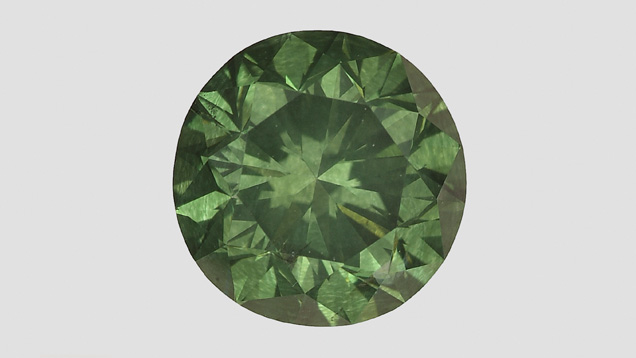Green Diamond, Treated with Radioactive Salt

Examination with a gemological microscope revealed a very unusual surface coloration. The surface had a mottled pattern created by very shallow green staining, likely from exposure to radiation (figure 2). This unusual feature is rarely observed on natural diamond surfaces or facets. Natural radiation staining on the surface of a diamond crystal would be mostly removed during faceting.

Figure 2. Observed at 35× magnification, the diamond shows a mottled effect created by
shallow green radiation stains. Photo by Jian Xin (Jae) Liao.
The stone owes all of its green color to these shallow radiation stains. Today, most artificially irradiated diamonds are treated with a low-energy electron beam. This often results in shallow color zoning that penetrates into the stone and aligns with the facet shape. In this case, the shallow staining was created using the older method of exposing the diamond to radioactive salts for an extended period of time. Mainly used on polished stones, this method leaves surface contamination.shallow green radiation stains. Photo by Jian Xin (Jae) Liao.
Stones irradiated in this fashion can have residual radiation, so we tested this stone using a Geiger counter. Only background radiation was detected, indicating that the treatment likely occurred decades earlier. Thus, this diamond posed no radiation hazards. Sir William Crookes first discovered radiation’s effects on diamond color by conducting a series of experiments using radium salts in 1904. Although rarely encountered today, these types of treated diamonds still show up in the trade. A careful inspection of the surface in diffused lighting is the most effective means of revealing the diagnostic surface coloration.



